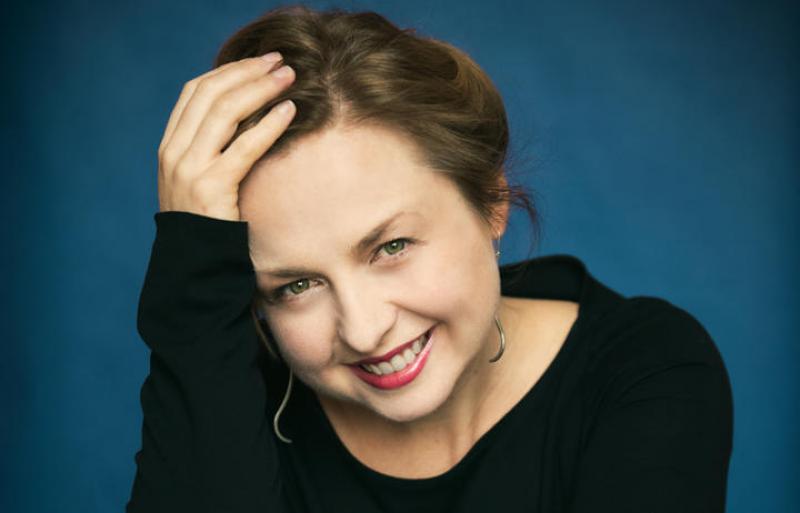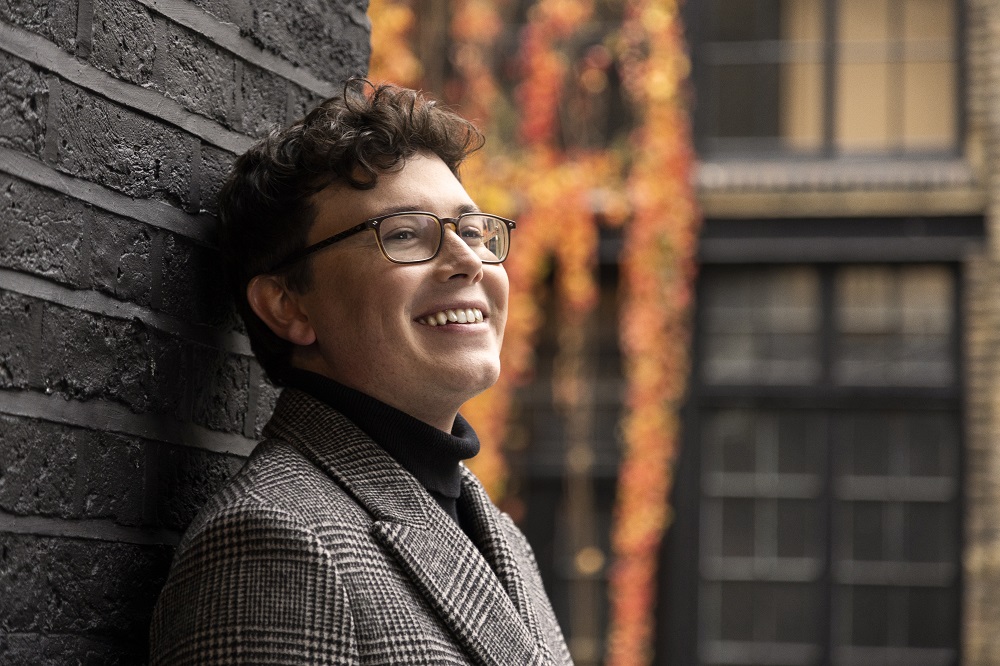Bartlett, LPO, Mathieson, Congress Theatre, Eastbourne review – Rhymes, Rhapsody and Winter Daydreams | reviews, news & interviews
Bartlett, LPO, Mathieson, Congress Theatre, Eastbourne review – Rhymes, Rhapsody and Winter Daydreams
Bartlett, LPO, Mathieson, Congress Theatre, Eastbourne review – Rhymes, Rhapsody and Winter Daydreams
Different kinds of glitter in Grace Williams, Rachmaninov and Tchaikovsky

Who could have imagined the table-turning controversy that might have cast doubt on the inclusion of works by Rachmaninov and Tchaikovsky when planning this programme?
Before raising the baton, Holly Mathieson expressed the hope that Russian music written before the current crisis would survive to be performed after it. Vociferous applause from the audience and bravo to the Association of British Orchestra and its members for their announcement of a measured approach and refusal to cancel Russian music. Let’s hope other arts institutions follow their cue.
Completed in 1940 and bearing little indication of its own war-torn times, Grace Williams’ Fantasia on Welsh Nursery Rhymes may have seemed a slightly incongruous companion for Rachmaninov’s Rhapsody on a Theme of Paganini and Tchaikovsky’s Symphony No.1 “Winter Daydreams”. Holly Mathieson coaxed a homespun charm as well as a strong element of the dance shared by all three works on the programme. Much influenced by the composer’s teacher Vaughan Williams, its contrast of brilliantly orchestrated genial high spirits and poignant melody cut a carefree dash to raise the spirits before the quicksilver wit and wintry sparkle of the two Russians.
Enter soloist Martin James Bartlett (pictured below by Paul Marc Mitchell) to raise the bar immediately with a scintillating and compelling Paganini Rhapsody. Ultra-flexible and tantalisingly unpredictable, he struck sparks off the mood and substance of each variation to generate a tingling sense of danger that matched Rachmaninov’s genius reworking of the Paganini theme at every twist and turn. Rarely can the soloist’s introduction of the Dies Irae in Variation 7 have resonated with such diversity of tone, inflection and chordal sensitivity. Similarly the rapt introspective musing of the piano’s solo announcement of the big theme of Variation 18, expectantly poised to give birth to one of the composer’s greatest thematic inspirations. The orchestra stuck to him like glue with equally bristling rapport, comprehensively reporting the composer’s leaner and meaner late orchestral palette in his greatest concertante work.  Bartlett’s encore of Liszt’s arrangement of Schumann’s “Widmung” was a breathtaking sleight of hands demonstrating how to gift-wrap a favourite melody in virtuoso flamboyance that prompted speculation about what subtleties Rachmaninov might have brought to the song had he made an arrangement of his own. No question however, the composer-pianist would have been hanging on every note of his Paganini masterpiece in the hands of this outstanding young pianist.
Bartlett’s encore of Liszt’s arrangement of Schumann’s “Widmung” was a breathtaking sleight of hands demonstrating how to gift-wrap a favourite melody in virtuoso flamboyance that prompted speculation about what subtleties Rachmaninov might have brought to the song had he made an arrangement of his own. No question however, the composer-pianist would have been hanging on every note of his Paganini masterpiece in the hands of this outstanding young pianist.
What a pleasure to hear Tchaikovsky’s still rarely performed First Symphony. Although it was a problem child for the composer, revised twice before publication, all four movements brim with an open-air freshness and memorable melodic invention stemming from Russian folksong and dance as music of the land, its people and culture. At times during the first and last movements, Tchaikovsky’s innovative introduction of greater lyrical freedom to symphonic form seemed constrained by undue seriousness of mood. Beating to the bar lines began to sap the longer drawn phrases of their smiling musical energy as though the inheritance was from Beethoven rather than Schubert and Mendelssohn.
Not so however with the two central movements, which present an impressionistic landscape of gloom and mist with an ear-catching aspirational folk melody of the composer’s own creation followed by a deftly playful scherzo with a trio section sporting the first of his irresistible symphonic waltzes. Both were beautifully contrasted and brought a sense of heartfelt longing combined with a celebration of uplifting rhythmic buoyancy at the core of the symphony. It was here that principal oboe Ian Hardwick shone with the most heartwarming and sensitive solo orchestral playing of the concert, holding the audience rapt as he spun the second movement Adagio’s long-drawn main theme to cantabile perfection. It was left to the finale to steam through to brass fanfares and rousing percussion to set a triumphant seal on the proceedings.
rating
Explore topics
Share this article
The future of Arts Journalism
You can stop theartsdesk.com closing!
We urgently need financing to survive. Our fundraising drive has thus far raised £49,000 but we need to reach £100,000 or we will be forced to close. Please contribute here: https://gofund.me/c3f6033d
And if you can forward this information to anyone who might assist, we’d be grateful.

Subscribe to theartsdesk.com
Thank you for continuing to read our work on theartsdesk.com. For unlimited access to every article in its entirety, including our archive of more than 15,000 pieces, we're asking for £5 per month or £40 per year. We feel it's a very good deal, and hope you do too.
To take a subscription now simply click here.
And if you're looking for that extra gift for a friend or family member, why not treat them to a theartsdesk.com gift subscription?
more Classical music
 From Historical to Hip-Hop, Classically Black Music Festival, Kings Place review - a cluster of impressive stars for the future
From quasi-Mozartian elegance to the gritty humour of a kitchen inspection
From Historical to Hip-Hop, Classically Black Music Festival, Kings Place review - a cluster of impressive stars for the future
From quasi-Mozartian elegance to the gritty humour of a kitchen inspection
 Shibe, LSO, Adès, Barbican review - gaudy and glorious new music alongside serene Sibelius
Adès’s passion makes persuasive case for the music he loves, both new and old
Shibe, LSO, Adès, Barbican review - gaudy and glorious new music alongside serene Sibelius
Adès’s passion makes persuasive case for the music he loves, both new and old
 Anja Mittermüller, Richard Fu, Wigmore Hall review - a glorious hall debut
The Austrian mezzo shines - at the age of 22
Anja Mittermüller, Richard Fu, Wigmore Hall review - a glorious hall debut
The Austrian mezzo shines - at the age of 22
 First Person: clarinettist Oliver Pashley on the new horizons of The Hermes Experiment's latest album
Compositions by members of this unusual quartet feature for the first time
First Person: clarinettist Oliver Pashley on the new horizons of The Hermes Experiment's latest album
Compositions by members of this unusual quartet feature for the first time
 Gesualdo Passione, Les Arts Florissants, Amala Dior Company, Barbican review - inspired collaboration excavates the music's humanity
At times it was like watching an anarchic religious procession
Gesualdo Passione, Les Arts Florissants, Amala Dior Company, Barbican review - inspired collaboration excavates the music's humanity
At times it was like watching an anarchic religious procession
 Classical CDs: Camels, concrete and cabaret
An influential American composer's 90th birthday box, plus British piano concertos and a father-and-son duo
Classical CDs: Camels, concrete and cabaret
An influential American composer's 90th birthday box, plus British piano concertos and a father-and-son duo
 Cockerham, Manchester Camerata, Sheen, Martin Harris Centre, Manchester review - re-enacting the dawn of modernism
Two UK premieres added to three miniatures from a seminal event of January 1914
Cockerham, Manchester Camerata, Sheen, Martin Harris Centre, Manchester review - re-enacting the dawn of modernism
Two UK premieres added to three miniatures from a seminal event of January 1914
 Kempf, Brno Philharmonic, Davies, Bridgewater Hall, Manchester review - European tradition meets American jazz
Bouncing Czechs enjoy their Gershwin and Brubeck alongside Janáček and Dvořák
Kempf, Brno Philharmonic, Davies, Bridgewater Hall, Manchester review - European tradition meets American jazz
Bouncing Czechs enjoy their Gershwin and Brubeck alongside Janáček and Dvořák
 Solomon, OAE, Butt, QEH review - daft Biblical whitewashing with great choruses
Even a top soprano and mezzo can’t make this Handel paean wholly convincing
Solomon, OAE, Butt, QEH review - daft Biblical whitewashing with great choruses
Even a top soprano and mezzo can’t make this Handel paean wholly convincing
 Two-Piano Gala, Kings Place review - shining constellations
London Piano Festival curators and illustrious friends entertain and enlighten
Two-Piano Gala, Kings Place review - shining constellations
London Piano Festival curators and illustrious friends entertain and enlighten
 Echo Vocal Ensemble, Latto, Union Chapel review - eclectic choral programme garlanded with dance
Beautiful singing at the heart of an imaginative and stylistically varied concert
Echo Vocal Ensemble, Latto, Union Chapel review - eclectic choral programme garlanded with dance
Beautiful singing at the heart of an imaginative and stylistically varied concert
 Scott, Irish Baroque Orchestra, Whelan, RIAM, Dublin review - towards a Mozart masterpiece
Characteristic joy and enlightenment from this team, but a valveless horn brings problems
Scott, Irish Baroque Orchestra, Whelan, RIAM, Dublin review - towards a Mozart masterpiece
Characteristic joy and enlightenment from this team, but a valveless horn brings problems

Add comment